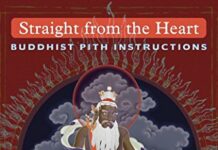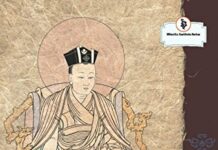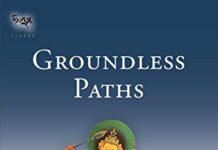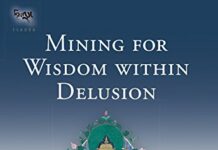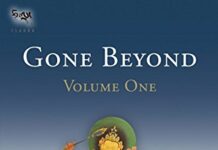
Ebook Info
- Published: 2015
- Number of pages: 1152 pages
- Format: PDF
- File Size: 42.81 MB
- Authors: Karl Brunnholzl
Description
A new translation of the primary Indian Buddhist text on buddha nature, with Tibetan commentaries explaining how this text can be used to contemplate and realize one’s own buddha nature. “Buddha nature” (tathāgatagarbha) is the innate potential in all living beings to become a fully awakened buddha. This book discusses a wide range of topics connected with the notion of buddha nature as presented in Indo-Tibetan Buddhism and includes an overview of the sūtra sources of the tathāgatagarbha teachings and the different ways of explaining the meaning of this term. It includes new translations of the Maitreya treatise Mahāyānottaratantra (Ratnagotravibhāga), the primary Indian text on the subject, its Indian commentaries, and two (hitherto untranslated) commentaries from the Tibetan Kagyü tradition. Most important, the translator’s introduction investigates in detail the meditative tradition of using the Mahāyānottaratantra as a basis for Mahāmudrā instructions and the Shentong approach. This is supplemented by translations of a number of short Tibetan meditation manuals from the Kadampa, Kagyü, and Jonang schools that use the Mahāyānottaratantra as a work to contemplate and realize one’s own buddha nature.
User’s Reviews
Editorial Reviews: About the Author KARL BRUNNHÖLZL was trained as a physician and presently works as a Tibetan translator and Buddhist teacher. He studied Tibetology, Buddhology, and Sanskrit at Hamburg University and Tibetan language and Buddhist philosophy and practice at the Marpa Institute for Translators in Kathmandu. Currently he works as a translator and interpreter for the Tsadra Foundation, Nalandabodhi, and the Nitartha Institute. In 2009 he was appointed as the first Western khenpo (abbot in the Kagyü and Nyingma lineages) by Dzogchen Ponlop Rinpoche.
Reviews from Amazon users which were colected at the time this book was published on the website:
⭐It’s hard to imagine a Buddhist text more complex then When the Clouds Part. This book is not for the faint of heart. The sheer weight of 1335 pages is unsettling when for the first time you heft it on to your lap to start the Preface. Past that initial apprehension, you will quickly be immersed and at time overwhelmed by a lengthy (52 page) section on the sutra sources of the concept of tathagatagarbha (The perfect Buddha that waits within each of us: It’s explained in more detail in the 26 pages that follow.). Here as in the rest of the text, you’ll need to pay strict attention or miss much that is in the detail. There are nuggets of wisdom throughout.Don’t set a timetable to complete reading this book. It’s intricate and reflects the brilliance of an author who must have spent years in its creation. Here’s a sample: “…..(V)irtually all early Indian Yogacara masters (such as Asanga, Vasubandhu, Sthiramati, and Asvabhava), if they refer to the term tathagatagarbha at all, always explain it as nothing but suchness in the sense of twofold identitylessness. Thus, all Indian Madhyamikas (except for Nagarjuna in his Dharmadhatustava) and virtually all classical Yogacara masters up to the tenth century were not willing to openly embrace the tathagatagarbha teachings as anything other than emptiness, obviously being very concerned about not getting anywhere near the non-Buddhist notion of an Atman….. (found at page 56.)…. and it goes on from there, for another 23 pages. Point made?The translator’s introduction will take you to page 328. It is a book in itself and well worth the effort to read, being part history, part philosophy, part comparative religion within various Buddhist schools, and includes comparing various Shentong traditions with each other and Mahamudra. Only after this firm foundation do you get to the translations, the tathagata’s heart, the ultimate continuum of the Mahayana, the uttaratantra and the commentaries interlaced inside them, ten translations in all. All jewels and perhaps it’s better to leave it at that and not try to expand and do so inadequately.Note that unless you choose to ignore the 2947 footnotes that fill 240 pages, you’ll find yourself constantly flipping back and forth, but to ignore the footnotes is a difficult call since missing it means missing large segments of information. Too bad there wasn’t a way of indicating those footnotes that merely recited references, and those with more wonderful explanations.A last word: If you haven’t gained familiarity with the basics of Buddhism and if you aren’t completely devoted to mastering advanced teachings and techniques or are without considerable time to devote to this text, look elsewhere, or just buy this book to look impressive on your bookshelves and then turn to it when you are ready and have the time. It will take discipline and devotion to read this book, but the reward will be immense.
⭐Karl Brunnholzl’s treatment of the Uttaratantra/Ratnagotravibhaga is simply stunning. It is the most impressive piece of scholarship I have ever seen. He includes a great wealth of supplementary material, notes, and bibliographical material so you can have a holistic understanding of the history, content, and various interpretations of Maitreya’s treatise on Buddha Nature and how it relates to the practice of meditation, in particular Mahamudra. It’s perspective is more form the Kagyu perspective of a practitioner of meditation rather than of that of a scholar, though as I mentioned it’s scholarship is phenomenal. He discusses for instance the subtle differences between the Shentong of the Jonangpa school and its later interpretations by the Kagyu teachers, and the ways in which the teaching of the Uttaratantra is truly complementary rather than in conflict with the Madhyamaka of Nagarjuna.
⭐If you want to know how the Karma Kagyu school of Tibetan Buddhism views Ultimate Reality this book is for you.
⭐Like any other Shastra, this is an philosophical academic treatise extremly tecnichal and complex. Structured in a dry clinical way, is suitable for those who are looking to accumulate intellectual knowledge, and for monastic students. It almost has not use for practitioners of meditation, therefore I wouldn`t recommend it to anyone except to those who are involved in schoolar monastic studies.
⭐Shastras explain in detail how to find the path, how to progress along the path etc. They explore in detail how to practice and how to deal with experiences that arise along your journey and help dispel any confusions which arise. Although complex they are not works of gratutious intellect, but explain and clarify in detail the experiences which arise in the course of your Dharma practice.This particular Shastra concentrates on the natures of the Mind as it appears in your practice, and is revered and praised and studied by all Buddhist traditions and by real Dharma practioners everywhere. It is one of the 13 great texts of Indian Buddhism and is a core text of both Tibetan and Chinese schools and is one of the foundation texts of both Mahamudra and Dzogchen.The majority of the book are commentries by realised masters of all schools. To dismiss this book, unfortunately, shows a lack of true Dharma understanding, and sadly misconstrues both the Shastra tradition and the nature of Prajna. Sad to behold.
⭐If you have a wish to understand the core of the Mahayana, this is essential reading. This gives a comprehensive look at Buddha Nature and how it is interpreted by various traditions. While typically this is the fodder of scholars, this book is really interesting as its raison de etre is to really link the view of tathagatagarbha with actual practice.
⭐Thanks
Keywords
Free Download When the Clouds Part: The Uttaratantra and Its Meditative Tradition as a Bridge between Sutra and Tantra (Tsadra) in PDF format
When the Clouds Part: The Uttaratantra and Its Meditative Tradition as a Bridge between Sutra and Tantra (Tsadra) PDF Free Download
Download When the Clouds Part: The Uttaratantra and Its Meditative Tradition as a Bridge between Sutra and Tantra (Tsadra) 2015 PDF Free
When the Clouds Part: The Uttaratantra and Its Meditative Tradition as a Bridge between Sutra and Tantra (Tsadra) 2015 PDF Free Download
Download When the Clouds Part: The Uttaratantra and Its Meditative Tradition as a Bridge between Sutra and Tantra (Tsadra) PDF
Free Download Ebook When the Clouds Part: The Uttaratantra and Its Meditative Tradition as a Bridge between Sutra and Tantra (Tsadra)
